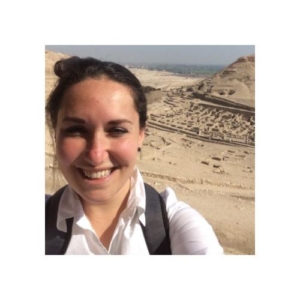Jennifer Thum
- Fellowship Dates 2017-2017
- Research Topic Turning the Landscape into a Stela: The Mechanics of Egyptian Royal Rock Inscriptions
- Fellow or Grant Type Bureau of Educational and Cultural Affairs
- Affiliation Pre-doctoral candidate Brown University
Ancient Egypt is often understood as a culture of “big building,” especially at the hands of its kings. Yet some of the best known and most important royal messages were inscribed not into built architecture, but into living rock, or stone that is still in situ. This project is the first discrete study of one such type of monument, royal living-rock stelae. Although comparatively rare in the repertoire of royal monuments, such stelae date mainly to the New Kingdom and were carved into cliffs, rock outcrops, and boulders throughout the Egyptian world, from the Fifth Nile Cataract to the Euphrates River. The goals of this research are to present a fuller picture of the geographical patterns of these stelae and their placement in the landscape; to use that information to better understand the motivations that led Egyptian kings to commission this type of monument; and to use the royal material as a proxy for Egyptian conceptions of living rock more broadly. The project centers on visits to the sites of living-rock stelae in Egypt, Sudan, and Lebanon in order to examine how these monuments are situated in their local landscapes; documentation of the stelae by photography and aerial photography; and a close reading of their texts in conjunction with their material and contextual aspects.
The stelae appear to cluster in areas of strategic and ritual importance: at boundaries or in boundary zones, in sacred landscapes, and on expedition routes. They were usually carved into features that represented or were immediately adjacent to salient points in the local landscape—places that were already ‘monumental’ before they were inscribed. Most importantly, together they attest to a deliberate, meaningful use of living rock as a monumental medium.
